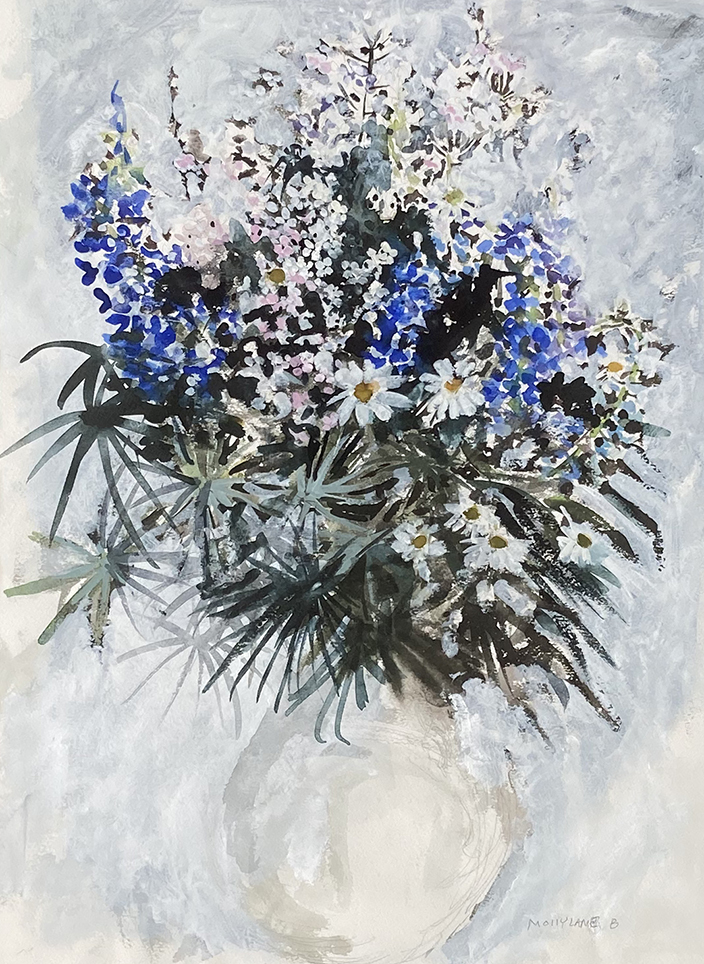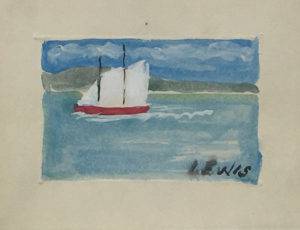Enjoy our collection of Molly Lamb Bobak paintings for sale, if you have any question or would like more detailed pictures please e-mail us at info@atlanticfineart.com. We are always looking to acquire Molly's work, if you're looking to sell any pieces please contact us at info@atlanticfineart.com.
Daisies and Lupins — Molly Lamb Bobak

Daisies and Lupins — Molly Lamb
Watercolour on Paper
Image Size: 17" x 24"
Price: SOLD
Details: Signed front, newly framed, title on verso
Framed: Measures approximately 25" x 32".
Provenance: Private Collection, Nova Scotia.
Click Here to Purchase or Inquire
Biography:
Molly Lamb Bobak
Molly Bobak CM ONB (née Lamb; February 25, 1920 – March 2, 2014) was a Canadian teacher, writer, printmaker and painter working in oils and watercolours. During World War II, she was the first Canadian woman artist to be sent overseas to document Canada's war effort, and in particular, the work of the Canadian Women's Army Corps (C.W.A.C), as one of Canada's war artists.
Born Molly Lamb on February 25, 1920, Bobak grew up in Vancouver, British Columbia. Bobak's mother, Mary Williams, initially worked as a housekeeper for Bobak's father, Harold Mortimer-Lamb, when his wife became ill. At some point, her parents decided to move in together along with Mortimer-Lamb's wife and their children. Bobak and her extended family seemed to live happily in this unconventional household.
Mortimer-Lamb was a mining engineer, journalist/art critic and collector who befriended the artists of the Group of Seven, who would visit the family on occasion.
Bobak's reputed poor eyesight and dislike for her teachers left her with poor school marks. Recognizing this, Bobak's mother encouraged her daughter to enroll at the Vancouver School of Art studying with artist Jack Shadbolt, whom she would remain close friends with all her life. Shadbolt enthusiastically encouraged her, and led her to discover European artists such as Cézanne and Matisse.
After the end of the war, the Bobaks had a son, Alex, and tried to make a living on the West Coast by painting, teaching, and other various jobs. She painted little during these years, as she was busy looking after her children and teaching painting at night school. However, she met Jacques Maritain, a French Thomist philosopher and Vatican ambassador to the United States. He was impressed with her work, and arranged for a visit to France on a French Government Scholarship.
Alan Jarvis, Director of the National Gallery of Canada was also impressed by her work, and invited her to participate in exhibitions such as the Sao Paulo Biennial and the Vancouver Art Gallery's Third Canadian Biennial in 1960. Through these exhibitions, she was able to enjoy increasing financial success and popularity.
She was among the first generation of Canadian women artists to work professionally and earn a living from their art. She was one of the fortunate women of the time, as her husband fully supported her art.
Source: Wikipedia
